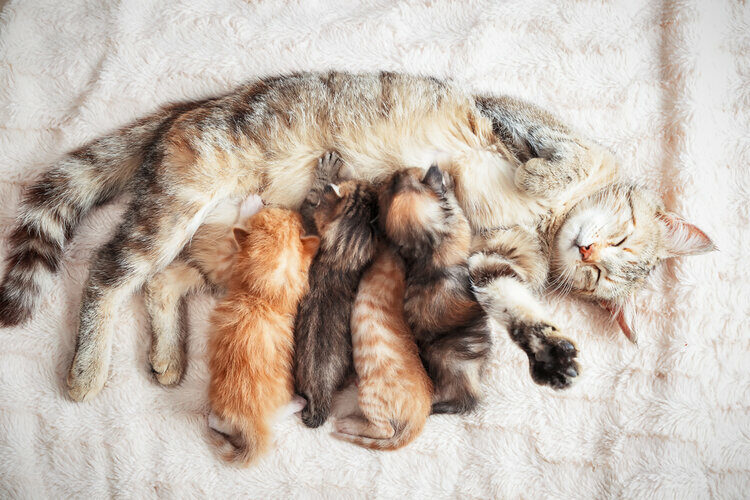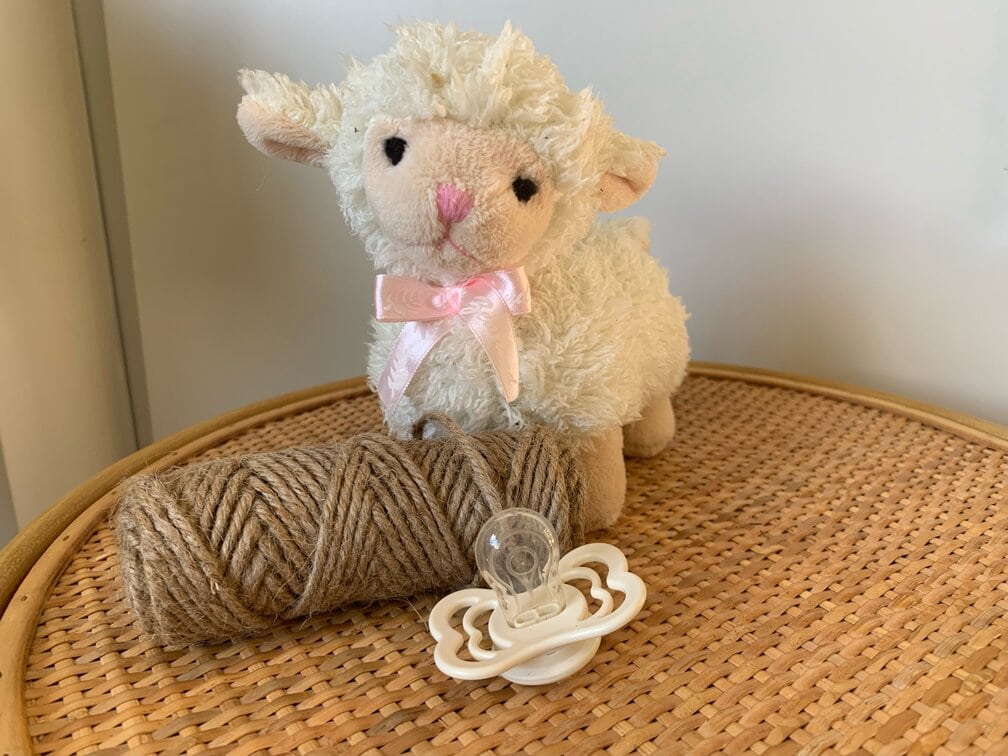
Cats actually have a lot of behaviors that show that they still cling to their old habits. When a cat kneads or treads, this is a throwback to when they used to do the same thing to mom’s nipples while nursing to help encourage milk production.
Some kittens also suckle as though they are suckling their moms, and they may perform a host of other grabbing, scratching, and chewing actions that are reminiscent of what your cat would do with their mom. While these actions are not necessarily a bad or negative sign, you may want to try to stop your cat from suckling and nibbling, or you may simply want to provide something other than your sweater or bare arm for them to comfortably suckle on.
A pacifier is a good option. Although this soothing aid can take several forms, it often takes the shape of a pillow with nipples. The cat is supposed to see the pillow in the same way as it would its mom, and the nipples are for suckling.
Commercial pacifiers can be expensive, especially if you buy two or more of them. Fortunately, you can also make your own kitten pacifier at home. It not only provides your kitten with the soothing appeal of something to suckle, but it can protect your arm and it can prevent you from having to continuously wash blankets, cushions, and throws.
What Is a Kitten Pacifier?
A kitten pacifier can be used to wean a kitten off its mother. It is considered necessary when a kitten is removed from mom too early, but some kittens will benefit from one regardless of age.
Even if a cat has been away from its mom for some time, it may still benefit from a pacifier because it helps calm the cat down and provides a calm environment. It can also benefit you, as the owner, because it prevents the cat from destroying blankets, cushions, and other items around the home with the constant kneading and sucking.
Anxious cats, and especially those that have just been moved to their new home, can benefit from having a pacifier. It can settle their nerves and reduce anxiety and stress. This will mimic the feeling of being close to its mom or the rest of its litter.
Teething time is as bad for cats as it is for people. The first phase is when a kitten is about 2 weeks old, and a second teething stage usually occurs at around 3 months. The latter also lines up with when you take them to their new home and away from their mom, so there are several reasons that a newly adopted cat would benefit from one of these items.
A pacifier can also help build trust. A kitten naturally trusts its own mother, otherwise, how else would it survive? By essentially tricking a kitten into believing that you are its mother, your kitten will trust you a lot more.
How to Make a Kitten Pacifier
A kitten pacifier can be as simple as a feeding bottle, but if you can attach something soft to a silicone teat, this starts to replicate the shape of your kitten’s mom. Using a toy that your kitten likes, and that smells of its home, will help ensure a greater chance that the kitten accepts the new pacifier. For a simple pacifier:
1. Choose the Pacifier
Choose between silicone and latex pacifiers. Do not choose plastic because this could do more harm than good to your kitten. Latex is softer but silicone tends to last longer.
If you are recycling or reusing a baby’s pacifier, ensure it is clean and make sure that the material hasn’t hardened.
It should not be too hard but should offer some resistance.

2. Choose a Blanket or Toy
To ensure that there is a better chance of your kitten accepting the pacifier, use a toy, a blanket, or another item that your cat loves. It will recognize the smell and even the feel of this toy.
A soft toy will feel more like a mother cat.
3. Tie the Items Together
Before you connect the two items together, it may actually be worth trying the pacifier alone. Some kittens will suckle on the pacifier, recognizing it as being similar to the feeling of their mother’s teat.
If this does not work, use a nylon string to tie the pacifier to the toy. Test the finished item by pulling on the soother and ensuring that it doesn’t fall off.
4. Clean the Pacifier
Ensure that the pacifier is washed and cleaned, ready for your kitten to suckle. It will have gotten dirty while you were handling it and working on it.
You should also ensure that other animals do not suckle on the pacifier, or the smell could put your kitten off.
A Pillow with Teats
Alternatively, you can use a favorite pillow or cushion and attach several pacifiers. This closely mimics the look and feel of the mother cat, so it could prove the more appealing option of the two for your kitten.
1. Choose a Pillow
Again, if you can choose a pillow that your cat loves, it will increase the likelihood that he will accept the pillow. At least try and ensure that the pillow smells of the kitten or its mom. It should not be too large of a pillow.

2. Add More Stuffing
Although it shouldn’t be too solid or hard, the pillow will need to be well stuffed because this will prevent the pacifiers from falling inside the pillow and becoming irretrievable. You can’t glue anything, because the adhesive could be highly toxic to your cat, so you will have to tie the pacifiers to the pillowcase and use the pressure of the pillow itself to give the right shape that will attract your kitten to suckle. Add more stuffing to the pillow, if necessary. You can always use old jumpers and other clothing if you don’t have any pillow stuffing laying around the house.
3. Make Holes
You don’t have to replicate a full double row of feline teats, but you will need to provide around four to create the most effective pillow. Cut the holes so that they are reasonably close but not so close that any tear will ruin the layout. Ensure that the holes are slightly smaller than the bulbous head of the pacifier, too. Try to ensure that the holes are evenly spaced out.
4. Add Soothers
Add clean soothers to the pillow. Pop the bulb of the pacifier head through the holes you made. If you can tie the pacifier to the inside of the pillowcase or attach it using some other safe method, this will prove beneficial in the long run, too. Four soothers should be ample.
5. Replace Pillow Cover
Reattach the pillow cover. Ideally, these will be slipcovers rather than those with zippers or hard surfaces that your cat might accidentally chew and suckle. Although your cat may get quite physical when suckling on the teats, they should be resilient enough to handle it without having to apply extra fastenings and without having to rely on poppers or buttons.
Kitten Pacifiers
A kitten pacifier can help your young cat get to sleep or transition from its old home to your new home. It can also reduce stress and anxiety. While a pacifier is most commonly used when a kitten moves from its mom to a new home at around 10 weeks old, some older cats can also benefit from having one of these items.
Some cats will simply suckle on a pacifier, and therefore do not require the addition of toys or pillows.
In other cases, though, you may need to attach the pacifier to a toy or favorite pillow. This will encourage your kitten to investigate and suckle the pacifiers. Making your own saves the money associated with buying potentially expensive commercial alternatives. The process is simple, uses items around the house plus pacifiers, and it can make a big difference to a tiny life.
Looking for more kitten information? Take a look at:
- 10 Best Kitten Foods: Reviews & Top Picks
- 10 Best Cat Beds for Kittens & Smaller Cats – Reviews & Top Picks
Featured Image Credit: Rashid Valitov, Shutterstock







